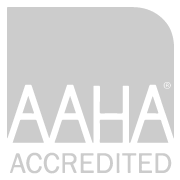
Nutrition
UNDERSTANDING NUTRITION
The positive impact of proper nutrition on health and disease is well established in all animals. Appropriate feeding throughout all life stages can help prevent diet-associated diseases, as well as to assist in the management of other diseases.
Studies on nutrition, particularly those completed during the past decade, have greatly enhanced the understanding of the nutritional needs of companion animals. Commercial diets are now formulated to help prevent nutritional deficiencies, boost the immune system, improve cognitive health, and slow the aging process. However, the marketing and advertising of commercial diets can often be colored with misconceptions and may make conflicting claims of superiority. The goal of feeding companion animals should always be to maximize the length and quality of the animal's life by providing a quality food source.
The quality of dog food has to be evaluated in multiple ways:
- Short term - is it readily eaten and not cause digestive upsets
- Medium term - the weight of the pet and the quality of its hair coat
- Long term - the pet's health, as well as its athletic and breeding performance
Comparing and evaluating different pet food diets is very difficult and nearly impossible for the consumer to evaluate. There is a wide variance in quality control programs across the pet food industry. In addition, there is a wide variance in quality control programs across the pet food industry, and it is nearly impossible for the consumer (DVM or pet owner) to evaluate. there is a wide variance in quality control programs across the pet food industry, and it is nearly impossible for the consumer (DVM or pet owner) to evaluate the massive amount of information and misinformation about pet foods on the World Wide Web, in books and publications, and elsewhere has led to considerable concern and confusion by the pet owning public. Many online sources, books, magazines and journals that offer pet food advice are not peer-reviewed scientific or medical journals. ("Peer review" is the objective evaluation of a creative work or performance by other scientists, who are of the same or higher ranking in the same field, in order to maintain or enhance the quality of the work in that field.) Therefore, their advice and reviews are based on opinions only, not on scientific facts. Do not believe information is true because it is on the Internet or has been published. Do not believe the marketing testimonials, look for evidence-based (science proven) nutrition facts.
Interpreting pet food labels and evaluating diets can be very deceiving and difficult to acquire the necessary information. The following information may help to better understand labels and manufacturer marketing confusion:
- The food labels "premium," "ultra premium," "natural" or "holistic" currently have no legal meaning.
- AAFCO (Association of American Feed Control Officials) states that the term "human grade" cannot be used. It has declared that using the term "human grade" is "false and misleading". However, the term continues to be on websites, in brochures and on some labeling.
- Don't get too hung up on the "first ingredient". It is important to note that the ingredients are listed by weight on the label; the heaviest ingredients are listed first, and the lightest ingredients are listed last. This often means that water-containing ingredients are listed before drier ingredients even though a dry ingredient may make up a larger portion of the food. For example, fresh meat contains 75% water. Diet X contains 25% lamb as fresh meat, 20% corn, 20% rice, 15% dried fish, 10% poultry fat and 10% vegetable oil (as listed on the ingredient list by weight). But in terms of quantity in the end product, the food will only contain 4-5% lamb protein and the cereals will be the main ingredient.
- The terms "organic" and "all natural" can have different meanings to different people and different pet food companies. Unfortunately, pet owners often believe that diets labeled "organic" or "all natural" provide superior nutrition for their pets. There are no scientific studies to demonstrate that these diets are safer, healthier or more nutritious foods.
- Under AAFCO definitions, it is currently not possible for commercial diets to be 100% natural or 100% organic since it is highly infeasible to formulate a complete and balanced product without reliance on some synthetic trace nutrients like vitamins, minerals, and taurine. The bulk of ingredients in a "natural" pet food and a traditional pet food may be the same.
- A common misconception is that pet food preservatives cause cancer. There is no scientific evidence suggesting that preservatives approved for use in pet food manufacturing cause cancer. However, recent data have shown that preservatives, when added to certain commercial diets, may prevent the formation of known cancer-causing compounds.
- Both people and pet food use the same preservatives. The United States Food and Drug Administration has analyzed the information and approved them as safe. Preservatives are used in both foods to keep them fresh and to prevent spoilage. Eating spoiled food is harmful to pets, just as in people.
- If the country of origin was required on pet food labeling, there would be many countries listed. Some ingredients that are required to balance a diet (especially the mineral mixes) are not produced in the United States.
- To ensure that the nutrients are digested, absorbed and utilized effectively by the body, there is no substitute for controlled feeding trials. AAFCO feeding trials can be completed in 26 weeks for a maintenance claim and 10 weeks for growth claim. The AAFCO feeding trials are controlled and standardized but are only short term. So while it is always good when diets have been through AAFCO feeding trials to ensure at least short term deficiencies and toxicities are picked up, the hope is that the diets have been on the market for a while and that the company has a good feedback mechanism (contact details including phone number for the company of the can etc.) so that any long-term problems have been detected also. You have to look at the history of the company and the research that it does.
- The large reputable companies have an edge over smaller ones in quality control, analyzing each batch for nutrient content, checking products at the expiration dates for spoilage or oxidation, backing the products with guarantees, supporting research and education, etc.
- Nutritionists generally recommend a food made by a well-known, reputable company that has undergone an AAFCO feeding trial and has a nutritional adequacy statement. All products claiming to be complete and balanced must have a nutritional adequacy statement. This statement should be the most influential factor in your decision to try a new food.
ANIMAL AND VETERINARY RECALLS AND WITHDRAWALS
The U.S. Food and Drug Administration release of its most recent listing of recalls. Pet food product recalls are included. Recalls are actions taken by a firm to remove a product from the market. Recalls may be conducted on a firm's own initiative, by FDA request, or by FDA order under statutory authority.
BODY CONDITION SCORING CHART
A body scoring chart is a visual aid to better understand your dog's and cat's body condition. It demonstrates when your pet is at its ideal weight, is too heavy, or is too thin.
DEFINITIONS OF DOG FOOD INGREDIENTS
AAFCO (Association of American Feed Control Officials) sets guidelines and definitions for animal feed, including pet foods. The Association of American Feed Control Officials (AAFCO) was formed in 1909 to establish a framework for uniform regulation of the feed industry.
A CONSUMER'S GUIDE TO PET FOOD
Valuable information about pet food is provided to aid in the understanding of pet food labels, ingredients and feeding guidelines
FDA GENERAL INFORMATION INTERPRETING PET FOOD LABELS
Descriptions of pet food product name explanation, ingredient list information, nutrition adequacy statement and more. "Pet owners and veterinary professionals have a right to know what they are feeding their animals. The pet food label contains a wealth of information, if one knows how to read it. Do not be swayed by the many marketing gimmicks or eye-catching claims."
FDA PET FOOD INFORMATION AND LINKS
The FDA regulates that can of cat food, bag of dog food, or box of dog treats or snacks in your pantry. The FDA's regulation of pet food is similar to that for other animal feeds. The Federal Food, Drug, and Cosmetic Act (FFDCA) requires that pet foods, like human foods, be safe to eat, produced under sanitary conditions, contain no harmful substances, and be truthfully labeled. This site also contains links to consumer information, pet food news and releases, and more.
FOOD AND NUTRITION INFORMATION CENTER, USDA
"The Food and Nutrition Information Center - a leader in food and human nutrition information dissemination since 1971 - provides credible, accurate, and practical resources for nutrition and health professionals, educators, government personnel and consumers."
OFFICE OF DIETARY SUPPLEMENTS, NATIONAL INSTITUTES OF HEALTH
The Office of Dietary Supplements (ODS) strives to strengthen the knowledge and understanding of human dietary supplements. The ODS evaluates scientific information, stimulates and supports research, disseminates research results, and educates the public.
"Today there are at least 50,000 dietary supplement products available containing vitamins and minerals, herbs and botanicals, and other ingredients such as glucosamine, fish oils, and probiotics. Yet for many of these dietary supplements, there are questions about their effectiveness and safety.
On the ODS Web site you will find accurate, up-to-date, and scientifically based information that we hope will help you make your best decisions in your research, your practice, your business, or when making personal health decisions on dietary supplement use." Paul M. Coates, Ph.D., Director, Office of Dietary Supplements, National Institutes of Health
OHIO STATE UNIVERSITY VETERINARY HOSPITAL NUTRITION SUPPORT SERVICE
This site has excellent description of body condition scoring, diet manual and a diet search function.
PET SLIM DOWN
Project: Pet Slim Down is an online tool developed by Purina to encourage weight loss for your pet. According to a 2009 study, 45 percent of dogs and 58 percent of cats in the United States are overweight or obese. That's an estimated 35 million dogs and 54 million cats. With veterinary support and a combination of proper diet and exercise, a healthy weight loss and ideal body condition can be achieved.
PETDIETS.COM
A web site designed to access veterinary nutritionists for pet nutrition information and advice, as well as to develop balanced homemade diets.
ROYAL CANIN WELLNESS THROUGH NUTRITION
Nutrition and diet information is provided for your dog and cat, sponsored by Royal Canin.
Royal Canin is not your average pet food company. Since their inception in 1967, they have been innovators in health nutrition because they do things differently. They were the first to develop a diet exclusively for large breed dogs, the first to produce a single breed diet for Persian cats, and the first to develop a nutritional program for indoor cats.
The philosophy at Royal Canin, first and foremost, is the respect of the animal. They believe gimmicks benefit the pet owner, but superb nutrition based solely on science benefits the pet.

What Makes Us Stand Out?
-
High-Quality Veterinary Medical Care Since 2008
-
Involved Caring For & Educating Our Community
-
Rave Reviews from Our Clients
-
Educational Approach to Pet Care
-
Continuity of Care
-
Conscientious & Comprehensive Exams





